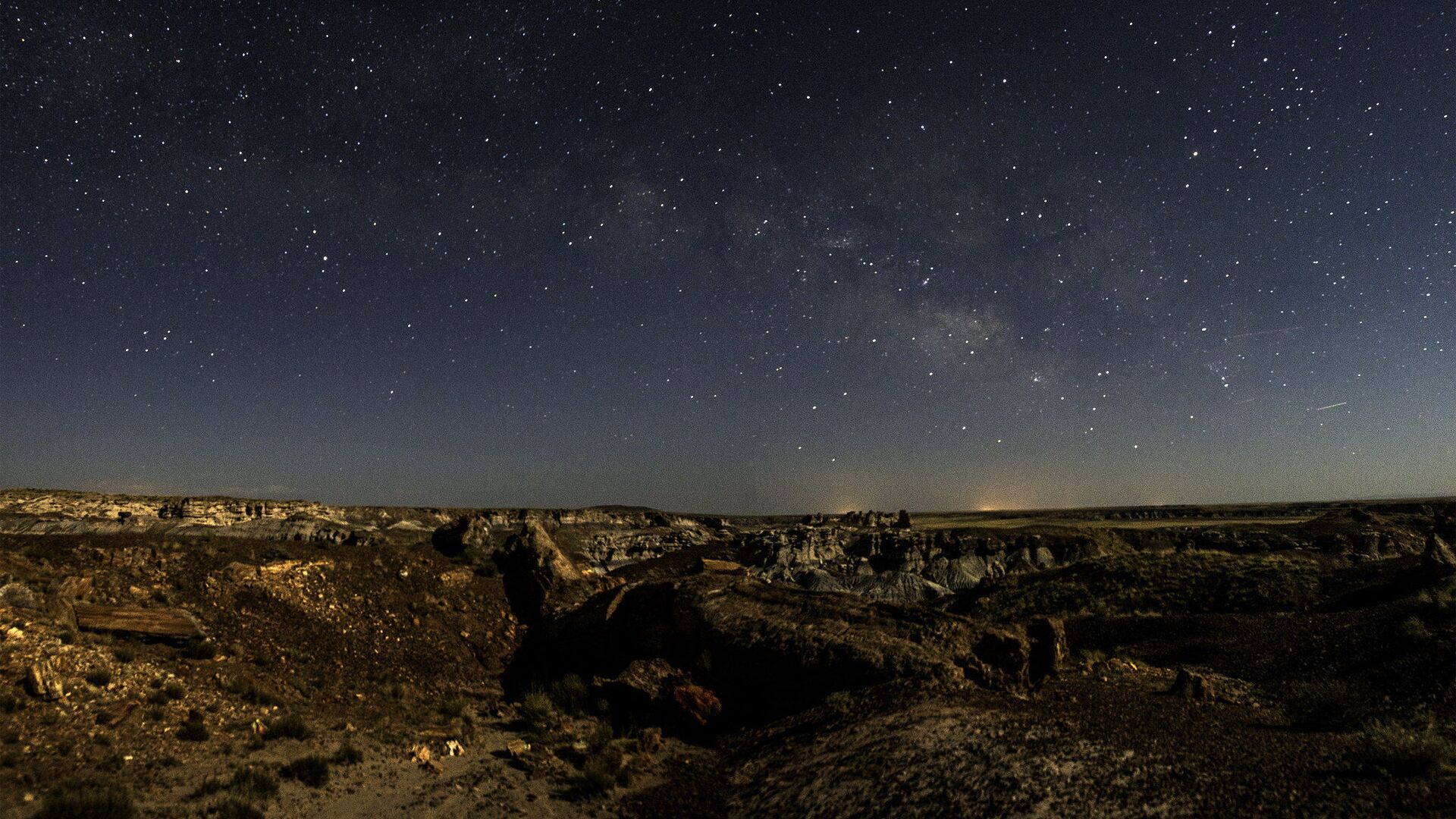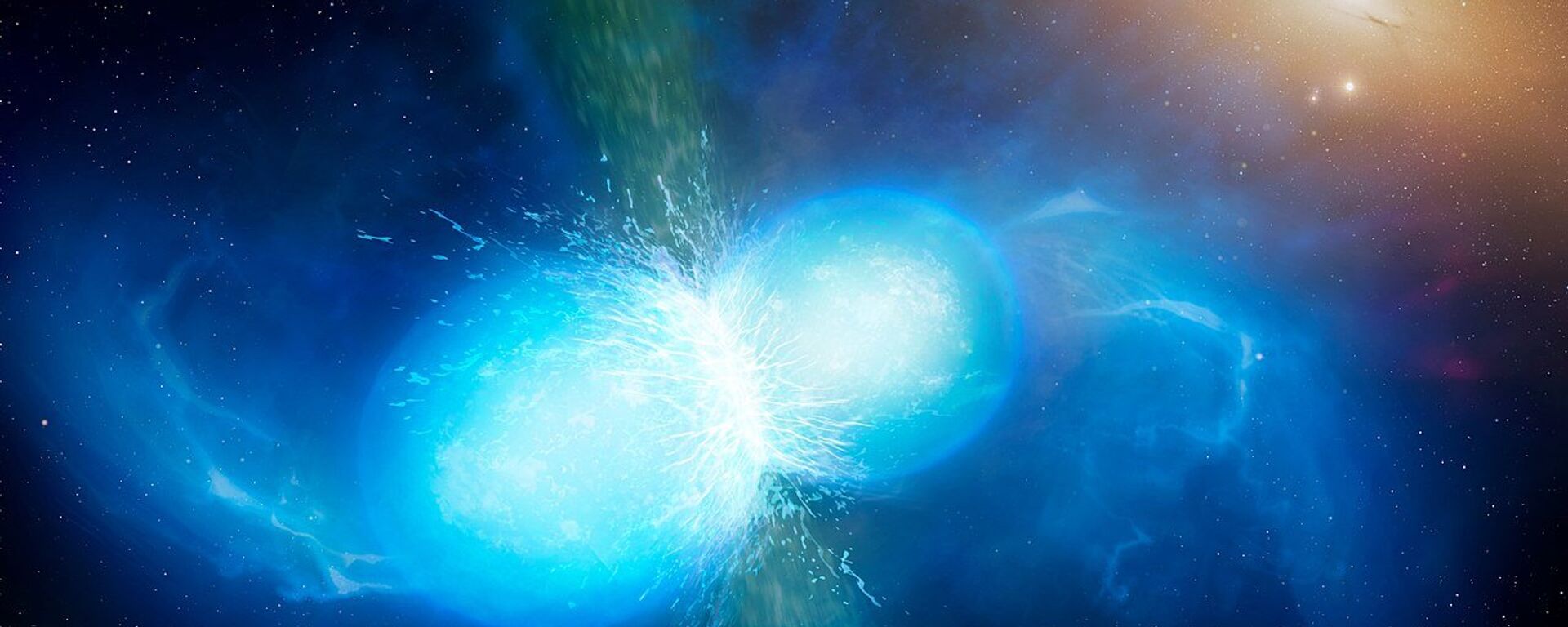https://sputnikglobe.com/20221126/astronomers-get-sneak-peek-of-ancient-galaxies-due-to-space-radiation-blasts-1104729318.html
Astronomers Get Sneak Peek of Ancient Galaxies Due to Space Radiation Blasts
Astronomers Get Sneak Peek of Ancient Galaxies Due to Space Radiation Blasts
Sputnik International
Gamma-ray bursts (GRBs) are immensely energetic explosions that have been observed in distant galaxies and are the most intense and luminous electromagnetic... 26.11.2022, Sputnik International
2022-11-26T14:37+0000
2022-11-26T14:37+0000
2023-04-12T16:59+0000
science & tech
neutron star
physics
gamma-ray burst
space
https://cdn1.img.sputnikglobe.com/img/07e4/09/15/1080523794_0:74:2048:1226_1920x0_80_0_0_d5ad4f4315e9ce1bfede068d3a1da336.jpg
A team of astronomers has developed the most immense catalogue to date of galaxies that are birthplaces of short gamma-ray bursts (SGRBs).Using several top-tier observatories (W.M. Keck Observatory in Hawaii, Gemini Observatories in Hawaii and Chile, and Magellan Telescopes at Las Campanas Observatory) and combining them with data acquired from the Hubble Space Telescope as well as NASA's retired Spitzer Space Telescope, the scientists identified the starting points of 84 SGRBs – four times as many as before. Among their findings, they discovered that young, active star-forming galaxies stand for 85% of the studied SGRBs.Astronomers believe SGRBs appear as a result of the fusion of two neutron stars, with the latter being the result of dying stars' collapsing cores.The researchers also detected several anomalies. For example, distinct SGRBs were spotted far outside their original galaxies, leading to the question of how they could travel that far.While some SGRBs are born during the birth or death of galaxies, others seem to come from slower collisions. Scientists base this conclusion on the fact that such SRGBs can be traced back to more distant and thus more ancient galaxies, with stars in those galaxies needing more time and space between them to form a binaryThe first discovery of the afterglow of an SGRB was made by NASA's Neil Gehrels Swift Observatory in 2005. Astronomers can now detect and pinpoint dozens of them every year.
https://sputnikglobe.com/20200329/astrophysicists-spot-two-neutron-stars-rippling-space-and-time-in-violent-merger-1078751571.html
Sputnik International
feedback@sputniknews.com
+74956456601
MIA „Rossiya Segodnya“
2022
News
en_EN
Sputnik International
feedback@sputniknews.com
+74956456601
MIA „Rossiya Segodnya“
Sputnik International
feedback@sputniknews.com
+74956456601
MIA „Rossiya Segodnya“
short gamma-ray bursts, neutron stars, galaxies, light of stars
short gamma-ray bursts, neutron stars, galaxies, light of stars
Astronomers Get Sneak Peek of Ancient Galaxies Due to Space Radiation Blasts
14:37 GMT 26.11.2022 (Updated: 16:59 GMT 12.04.2023) Gamma-ray bursts (GRBs) are immensely energetic explosions that have been observed in distant galaxies and are the most intense and luminous electromagnetic events since the Big Bang.
A team of astronomers has developed the most immense catalogue to date of galaxies that are birthplaces of short gamma-ray bursts (SGRBs).
Using several top-tier observatories (W.M. Keck Observatory in Hawaii, Gemini Observatories in Hawaii and Chile, and Magellan Telescopes at Las Campanas Observatory) and combining them with data acquired from the Hubble Space Telescope as well as NASA's retired Spitzer Space Telescope, the scientists identified the starting points of 84 SGRBs – four times as many as before.
Among their findings, they discovered that young, active star-forming galaxies stand for 85% of the studied SGRBs.
"This is the largest catalog of SGRB host galaxies to ever exist, so we expect it to be the gold standard for many years to come," research leader and Northwestern graduate student Anya Nugent said in a statement. "Building this catalog and finally having enough host galaxies to see patterns and draw significant conclusions is exactly what the field needed to push our understanding of these fantastic events and what happens to stars after they die."
Astronomers believe SGRBs appear as a result of the fusion of two neutron stars, with the latter being the result of dying stars' collapsing cores.
The researchers also detected several anomalies. For example, distinct SGRBs were spotted far outside their original galaxies, leading to the question of how they could travel that far.
"We suspect that the younger SGRBs we found in younger host galaxies come from binary stellar systems that formed in a star formation 'burst' and are so tightly bound that they can merge very fast," Nugent said. "Long-standing theories have suggested there must be ways to merge neutron stars quickly, but, until now, we have not been able to witness them."
While some SGRBs are born during the birth or death of galaxies, others seem to come from slower collisions. Scientists base this conclusion on the fact that such SRGBs can be traced back to more distant and thus more ancient galaxies, with stars in those galaxies needing more time and space between them to form a binary
"In a decade, the next generation of gravitational-wave observatories will be able to detect neutron-star mergers out to the same distances as we do SGRBs today," Wen-fai Fong, an astrophysicist at Northwestern University, said in the statement. "Thus, our catalog will serve as a benchmark for comparison to future detections of neutron-star mergers."
The first discovery of the afterglow of an SGRB was made by NASA's Neil Gehrels Swift Observatory in 2005. Astronomers can now detect and pinpoint dozens of them every year.


